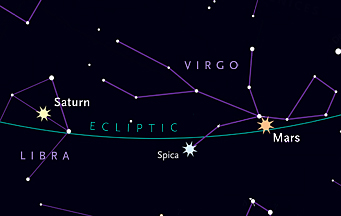Why don’t you produce a star atlas with mirror-image charts? It would be of immense value to the many observers who use a star diagonal on their telescopes.

It’s a great idea in theory, but not in practice. Here’s why:
· economics. Printing two versions of an atlas would double the production cost to meet the needs of a finite pool of buyers. Every all-sky atlas could be produced in four versions: north up, correct view; north up, mirror reversed; south up, correct; south up, mirror reversed.
· convention and convenience. A north up, correct view is what you see with the naked eye or binoculars from midnorthern latitudes when objects near the celestial equator or ecliptic are due south and highest in the sky.
· electronic alternatives. Many computerized star atlases and planetarium programs let you change a chart’s orientation at will. You can use a printed atlas for reference but print customized charts or take a laptop into the field.
· optics independence. Skywatchers use various instruments: the naked eye, binoculars, cameras, a finderscope, a red-dot finder, or several kinds of telescope. Each has its preferred orientation or image sense. So, again, we fall back on convention (a north up, correct view).
We do produce mirror-reversed Moon maps, which are very popular. But they are much less expensive to make than an all-sky atlas.
— Paul Deans
 0
0
Comments
You must be logged in to post a comment.